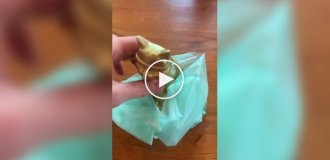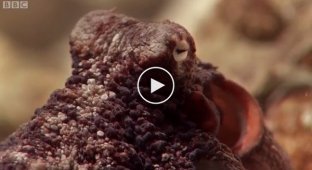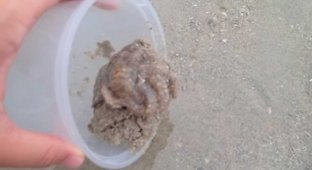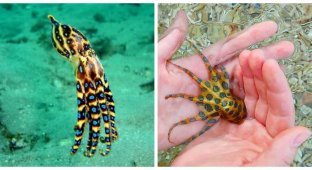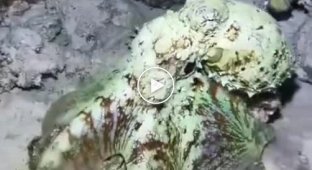An octopus led a scuba diver to an underwater monument (5 photos + 1 video)
Jules Casey thought the huge octopus was curious when it extended a long tentacle and wrapped itself around her arm. But when he began to lead her along, the Australian became interested. 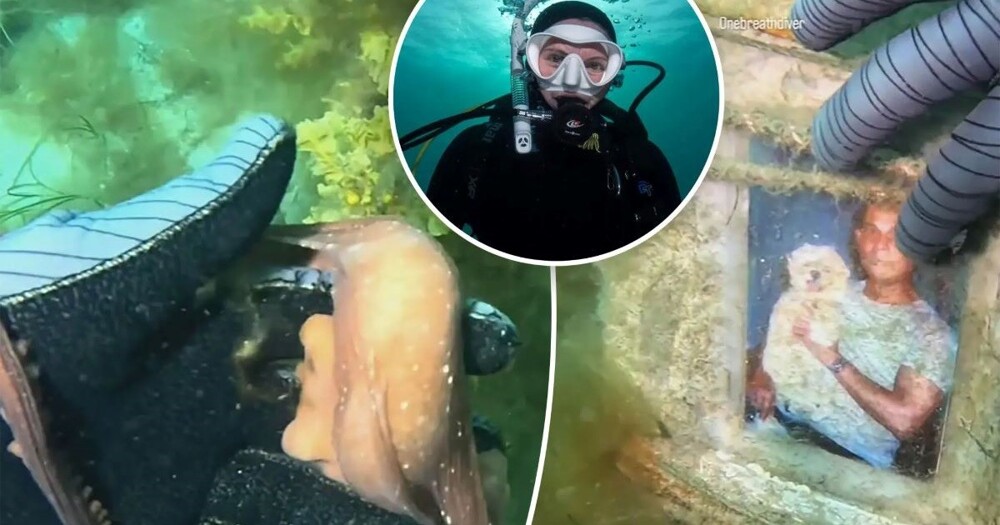
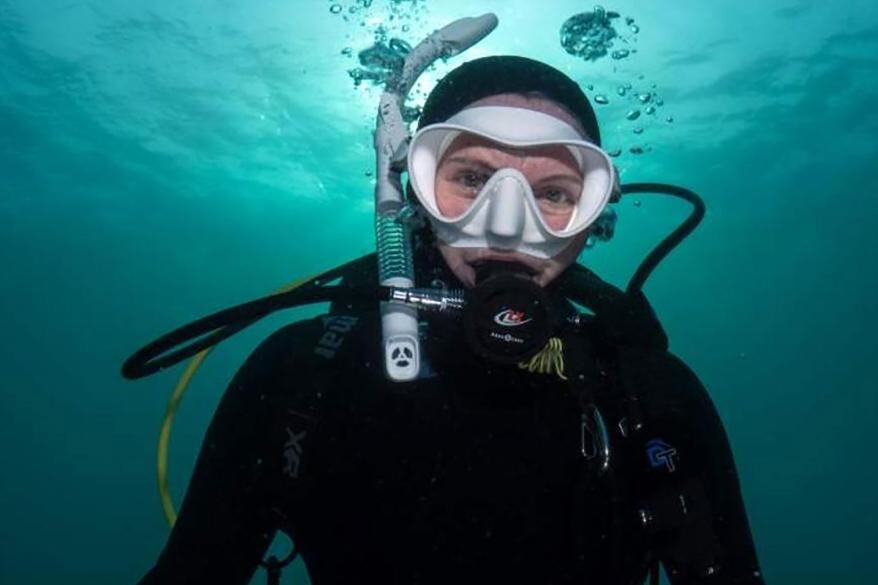
“He would swim for a little while, then stop and turn around, as if he was checking to see if I was following him,” Casey said.
After a few minutes of swimming in the icy waters off the Mornington Peninsula, the friends reached their destination. 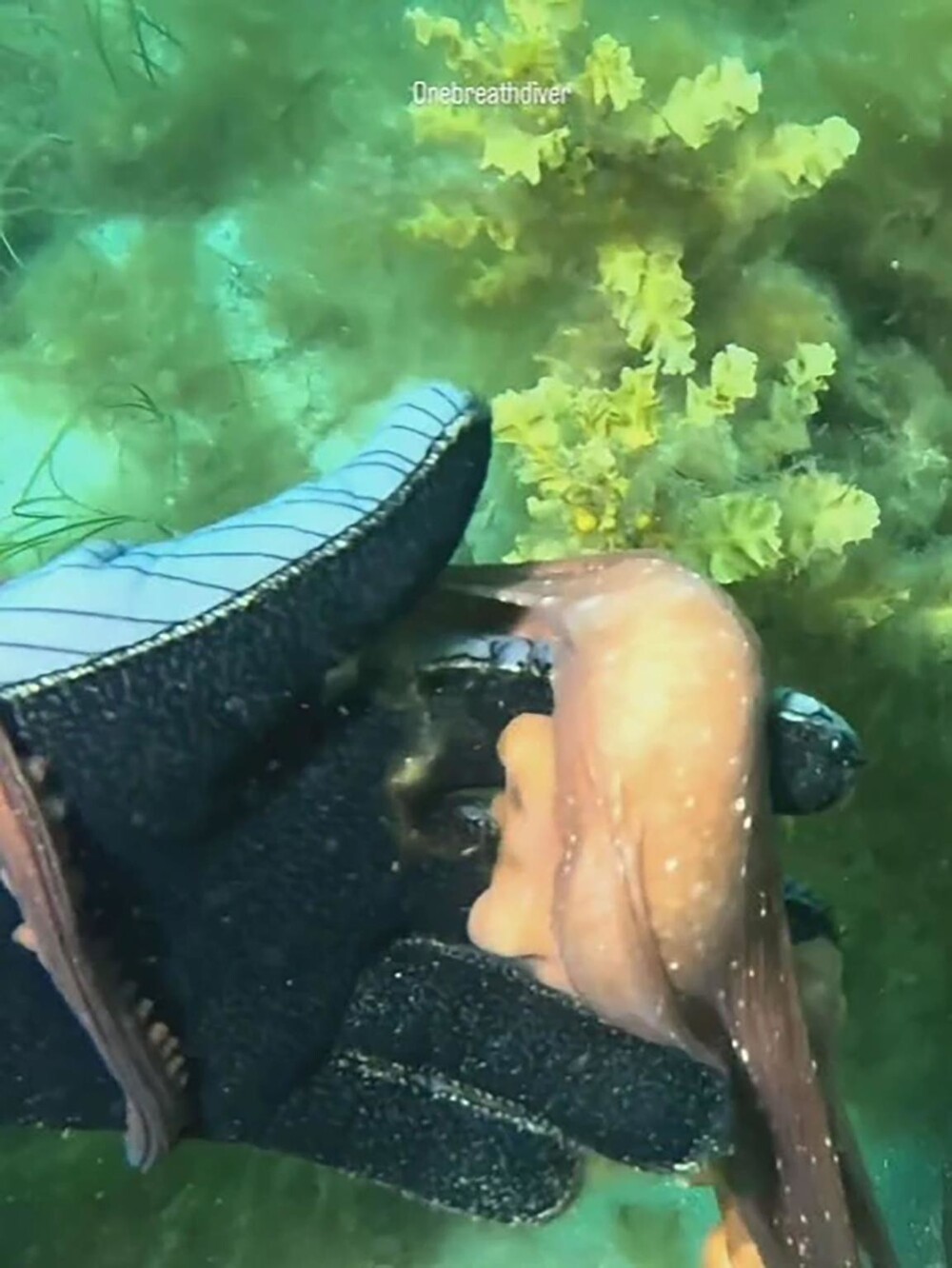
It turned out that the cephalopod led her to a secret shrine.
"It was a block that looked like a tombstone. I was amazed."
The monument contains a photograph of a man holding a fluffy white dog in his arms and a plaque with the name “Lorenz.”
The octopus did not swim away from the girl; it seemed to be happy.
“That time I swam further than usual. The first thing I noticed was the markings in the form of metal stars on the bottom,” says Jules. “Then I saw the sculptures and thought that someone was building an artificial reef.”
"Anything underwater allows corals and plants to grow into a sort of artificial reef, creating a small ecosystem."
During subsequent dives, the girl found pegs and PVC pipes located at a distance of about five meters from each other.
Together with the sculptures they formed a large circle.
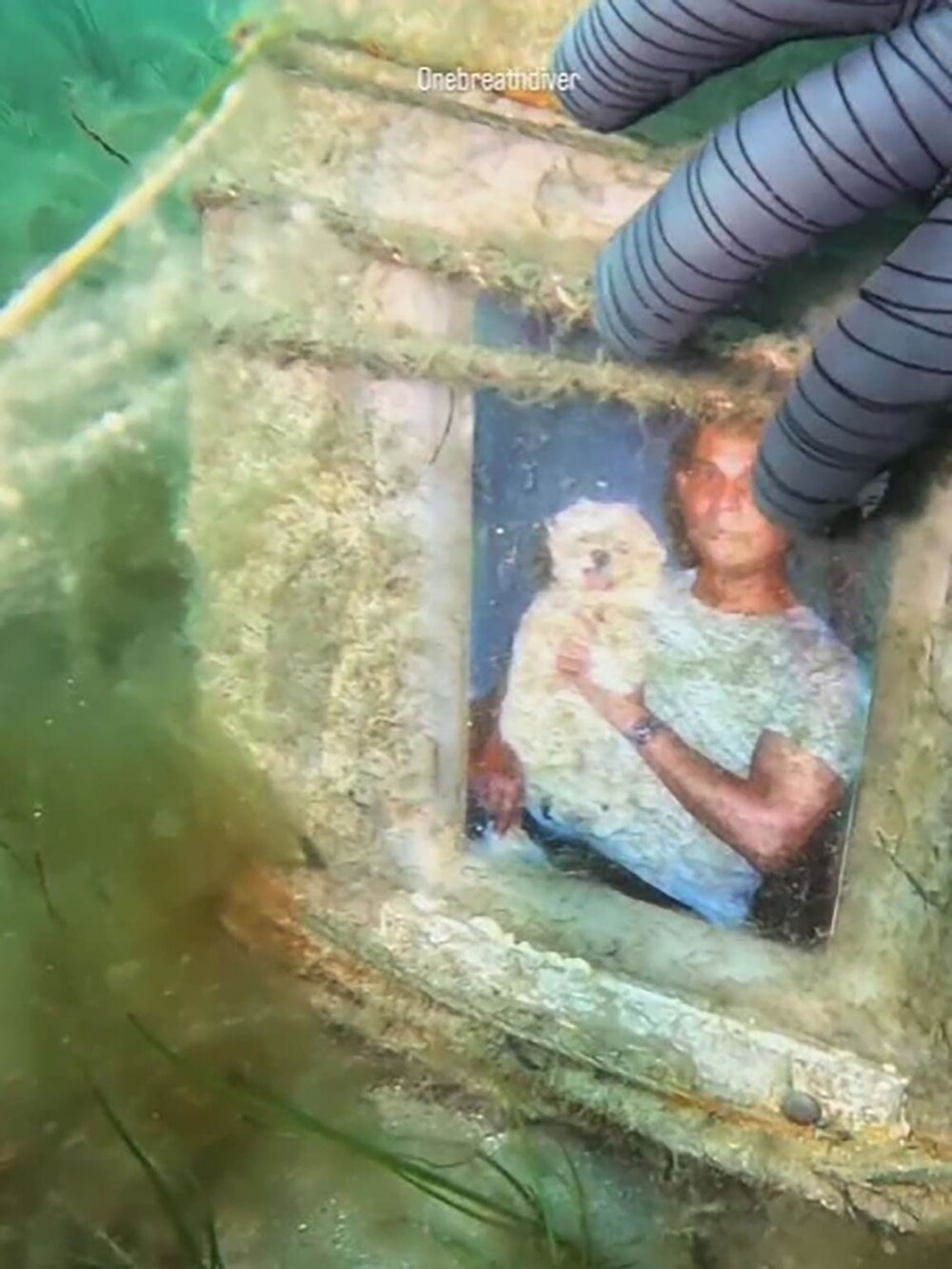
Casey has been diving for many years and enjoys snorkeling even in winter.
"This time of year is when the fun happens," she says. "It's all about the right gear, because I used to hate that cold water shock. Now I have a special wetsuit, so I don't get that cold."
Recently, Jules was chatting with a man at a local dive shop and mentioned an incredible encounter with an octopus.
"This was the man who created the reef. I couldn't believe it. But he showed me a map of the site in memory of his dead friend Lorenz."
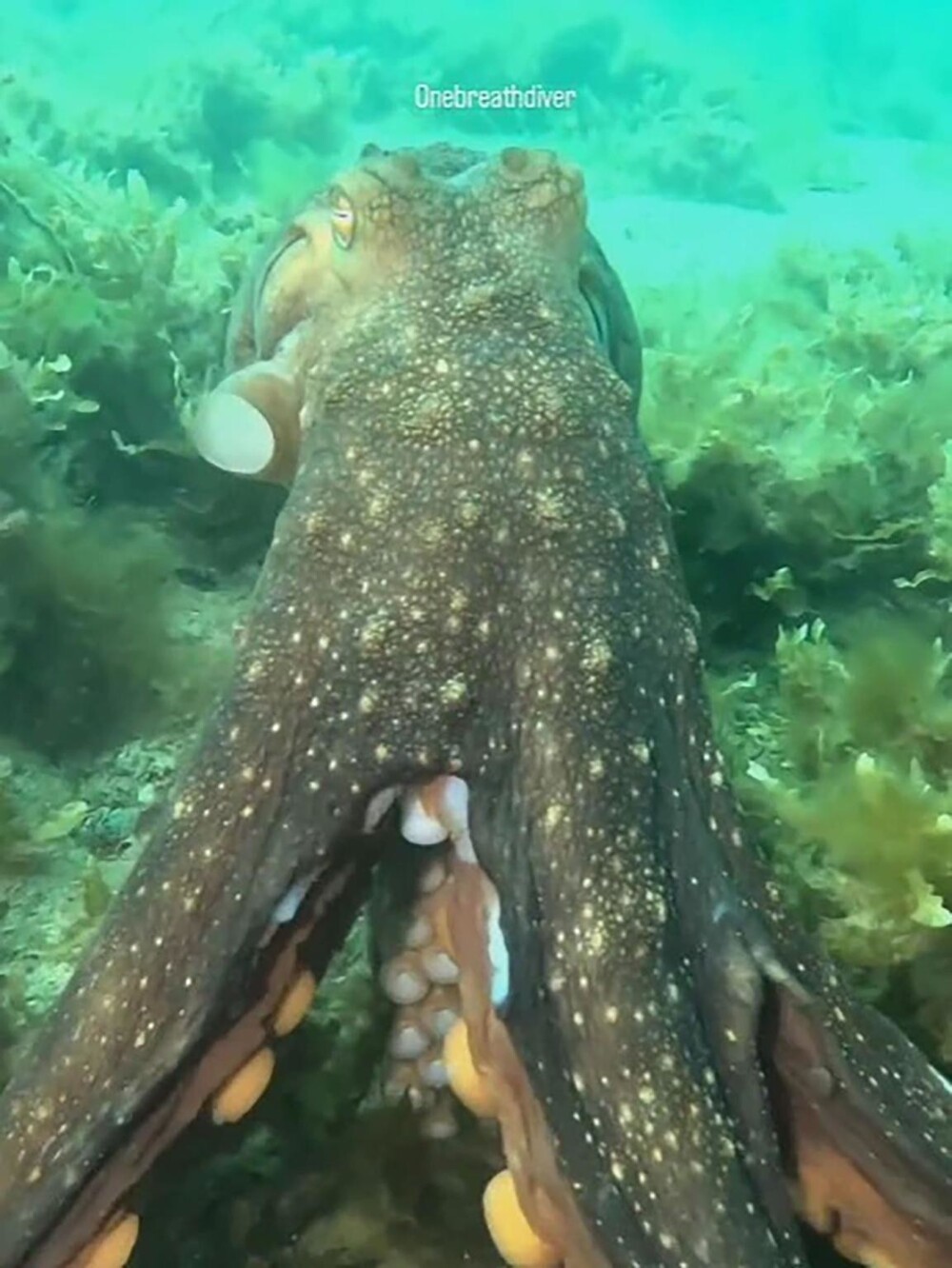
The Australian woman has seen that octopus more than once. According to her, such meetings are not unusual.
"They are very curious, especially during the mating season. They stretch out their tentacles and touch you. They can study your camera for quite a long time."
Now the inhabitant of the deep sea has white spots and the tips of some tentacles are missing. Physical changes indicate that it has mated and may be nearing the end of its life.








